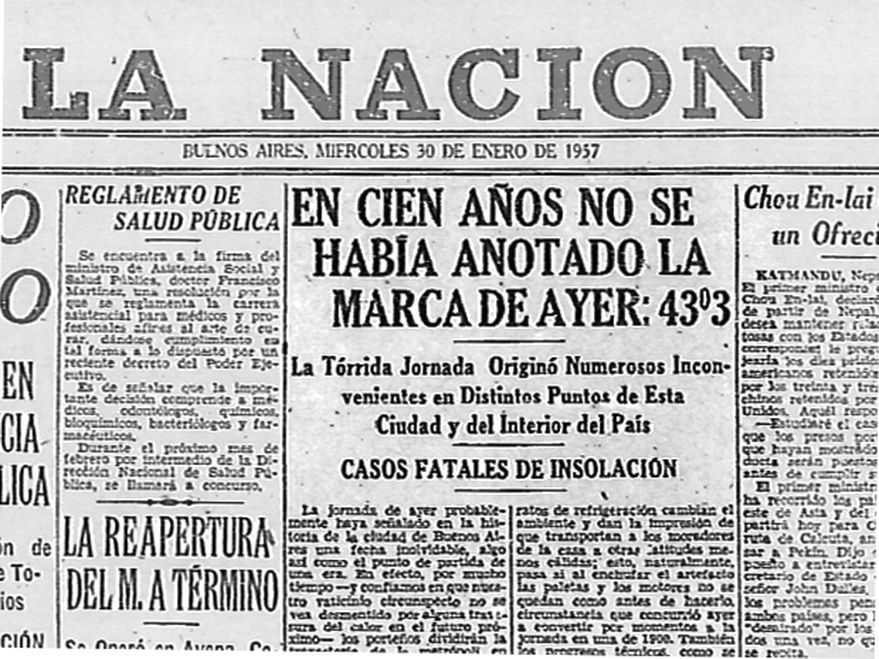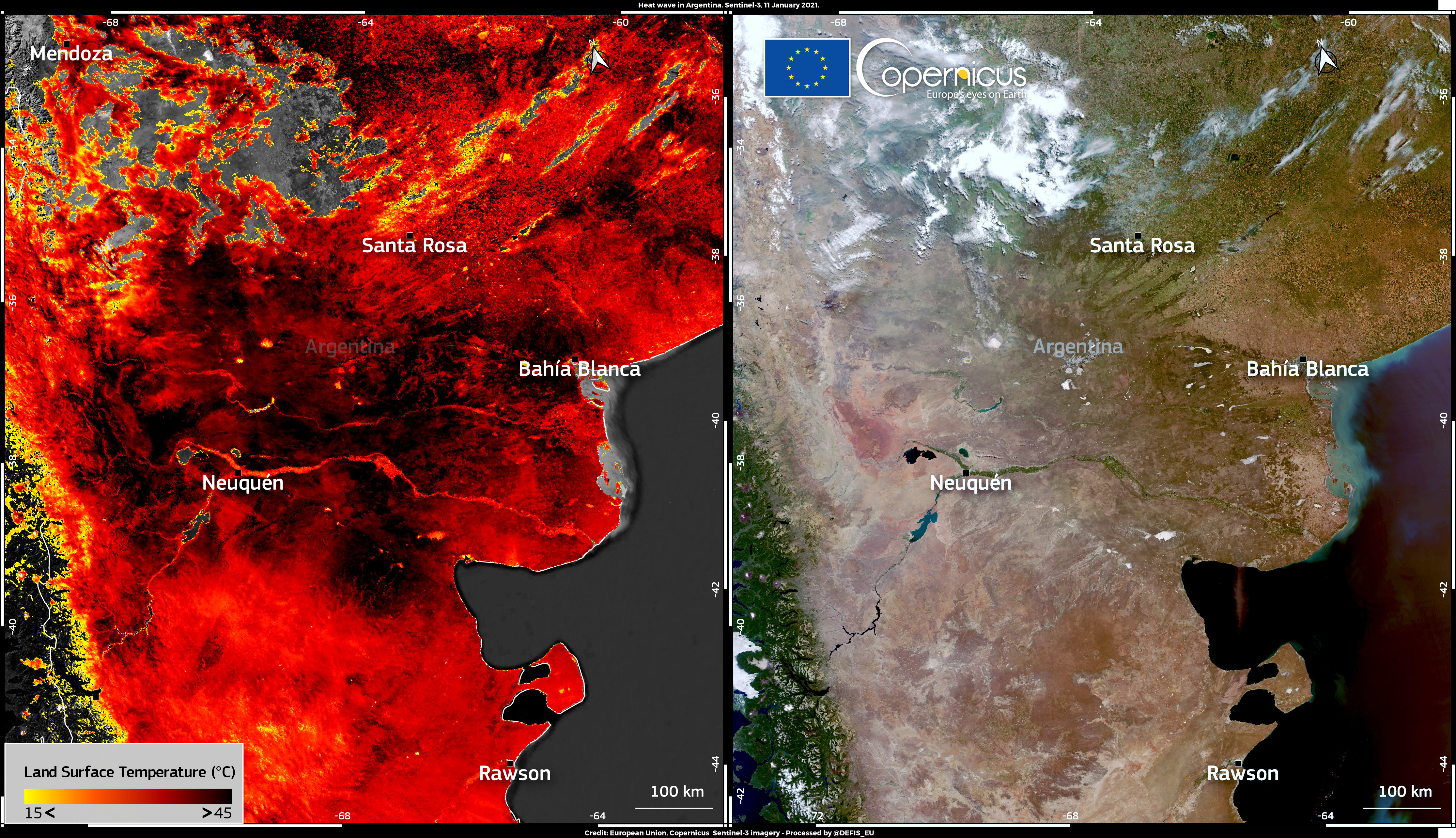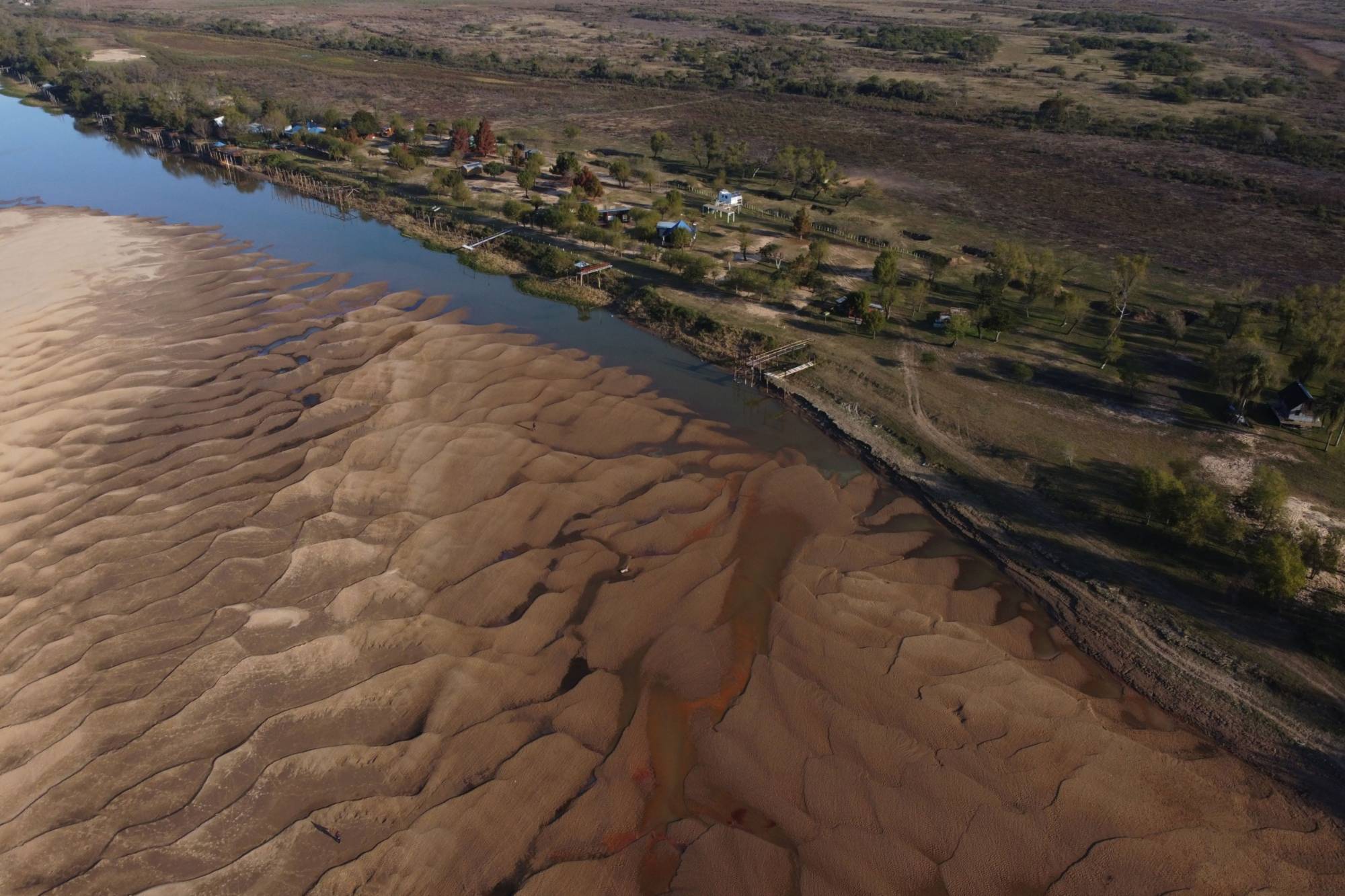There have now been almost 10 days in a row of the heatwave that has led to records for maximum temperatures being broken in Argentina, southern Brazil, and also Uruguay during the summer. More than 50 cities in Argentina have already surpassed the 40ºC barrier in recent days. The region is now experiencing a succession of forest fires and droughts that are damaging summer crops.
42ºC – 50ºC
The city of Buenos Aires has had a scorching experience enduring heat that is extremely rare in its intensity and which has been seen only once in 117 years of meteorological observations of the Argentine capital. According to the National Weather Service, 41.5ºC was reached last Friday, January 14th at the Central Observatory of Villa Ortúzar while on Saturday, January 15th it rose to 42ºC with a thermal sensation that exceeded 50ºC.
The previous highest temperature registered in Buenos Aires was in 1957 when the thermometers reached 43.3ºC leading the newspaper, La Nacion, to publish news of a wave of deaths caused by heatstroke across the country.

“In our country, this heatwave is the most extreme when it comes to intensity,” explained Télam Matilde Rusticucci, a researcher at the National Council for Scientific and Technical Investigations of Argentina, known as Conicet.
The World Meteorological Organization (WMO) which is linked to the United Nations has also reported that the situation in Argentina will be critical this summer and has warned the authorities that “the heatwave can affect health, the distribution of water and energy, in addition to agriculture.”
In Uruguay, the temperature reached 44 degrees in the Florida region, and in Rio Grande do Sul, the southernmost state in Brazil, the city of Uruguaiana recorded 42ºC, the highest temperature in the country this year.
Thermometers reached over 50ºC on the ground according to satellite measurements between Argentina, Uruguay and Rio Grande do Sul. The images were captured by the Copernicus system, the European Union’s environmental and climate consortium that monitors the climate and environment across the planet using a series of satellites.

Wildfires and blackouts
This image shows how agriculture and natural vegetation in these regions have been impacted by the heatwave. Argentina, for example, had more fires in just three days than the historical average for all of January according to satellite monitoring data from the National Institute for Space Research (INPE), located in Brazil.
Between Wednesday, January 12th, and Friday, January 14th, there were more than 1,800 hotspots in the country, a number that exceeds the entire monthly average of 1,648 from 1998 to 2021.
In the first 14 days of the month, Argentina had 3,144 hotspots, double the monthly average of 1,648. The previous record in January was in 2002 with 4,624. In just two weeks, Argentina has faced the most fires in the first month of the year since 2017.

With temperatures around 40°C, forest fires persist in Argentine Patagonia where about 6,000 hectares have been devastated in the last 40 days, according to officials.
The Argentine capital is also experiencing frequent power cuts due to an energy system that is considered old and the grid being overloaded at this time of year. More than 700,000 Argentines were left without electricity and water for more than 10 hours last Tuesday, January 11th thus facing the high temperatures without basic infrastructure.
Over the last weekend, the residents of Buenos Aires stood at the open windows and balconies of their homes and apartments to applaud the rain that brought relief after a historic sequence of days of extreme heat in the Argentine capital.
Impact on agriculture
The impact of the extreme weather conditions is being felt particularly by farmers in the region encompassing southern Brazil, Uruguay, and Argentina which is suffering significant crop losses brought about by a prolonged drought that has marked the past year with the current high temperatures potentially further exacerbating the situation.
In the state of Rio Grande do Sul in Brazil, 159 municipalities are already in an emergency situation due to the drought that began in November. The losses recorded so far have affected the production of grains, fruits, vegetables, and milk. The Fecoagro, one of the most important entities of Brazilian farmers, has estimated that the losses in corn and soybean crops alone could exceed US$4.7 billion.

In southern Argentina, where rainfall did not even reach 200 millimeters throughout 2021, the drought has especially affected the port hub of Rosario where about 80% of the country’s agricultural exports are loaded.
“The agricultural sector, which was already suffering from the lack of rain, is being punished even more by the high temperatures. Excessive heat directly affects the development of plants and can burn the plantations,” says Olivio Bahia, a meteorologist at Inmet.
In Uruguay, the first days of 2022 have already been marked by frightening images of the fire in the west of the country. Around 37,000 hectares have been razed in the Paysandú and Río Negro regions, marking the biggest fire in the country’s history.
What is the cause?
The current heatwave is a consequence of the mass of hot and dry air trapped between Argentina and Brazil. The phenomenon is a result of an area of high atmospheric pressure that is sitting over Rio Grande do Sul, inhibiting the formation of cloud cover and consequently leading to rising temperatures and reduced air humidity.
Carolina Vera, a researcher at Conicet and Chief of Staff at the Argentine Ministry of Science, Technology, and Innovation, says that:
“extreme heatwaves like the one we are experiencing are already more frequent because global warming is 1.1 degrees above the normal values established at the beginning of the industrial age, at the end of the 19th century”. She added that “heatwaves are five times more frequent now than they were 50 years ago. In a world with an increase of one and a half degrees, they will be eight times more frequent.”

